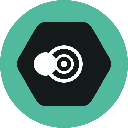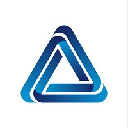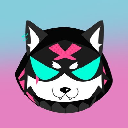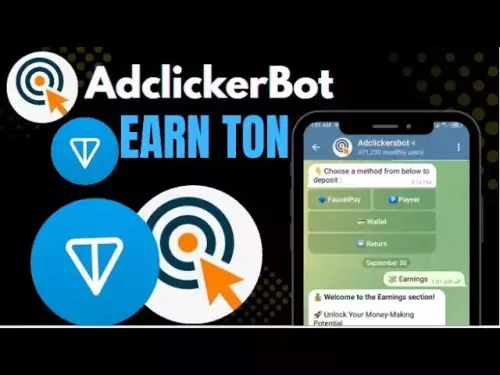-
 bitcoin
bitcoin $114779.865156 USD
2.30% -
 ethereum
ethereum $4226.519789 USD
2.39% -
 tether
tether $1.000545 USD
0.04% -
 xrp
xrp $2.890223 USD
0.92% -
 bnb
bnb $1030.029301 USD
2.95% -
 solana
solana $212.824944 USD
1.69% -
 usd-coin
usd-coin $0.999757 USD
0.01% -
 dogecoin
dogecoin $0.234961 USD
-0.27% -
 tron
tron $0.337174 USD
0.42% -
 cardano
cardano $0.804783 USD
0.09% -
 hyperliquid
hyperliquid $45.748770 USD
-2.85% -
 chainlink
chainlink $21.699170 USD
0.82% -
 ethena-usde
ethena-usde $1.001452 USD
0.08% -
 avalanche
avalanche $30.237800 USD
1.14% -
 stellar
stellar $0.372604 USD
1.52%
What is a Reentrancy Attack?
Reentrancy attacks exploit smart contract vulnerabilities by repeatedly calling a function before completion, often draining funds. Preventing this requires the Checks-Effects-Interactions (CEI) pattern, ensuring state updates occur before external calls.
Mar 10, 2025 at 08:10 pm

- Reentrancy attacks exploit vulnerabilities in smart contracts to repeatedly call a function before the initial call completes, draining funds or causing other malicious actions.
- The core vulnerability lies in the lack of proper checks to prevent re-entry before state updates are finalized.
- Prevention involves using checks-effects-interactions (CEI) pattern, modifying the contract's state only after all external calls are complete.
- Understanding reentrancy vulnerabilities is crucial for developing secure and reliable smart contracts.
A reentrancy attack is a type of exploit targeting smart contracts on blockchain platforms like Ethereum. It leverages a vulnerability where a malicious contract can repeatedly call a function within the target contract before the initial call has fully executed. This allows the attacker to manipulate the contract's state and drain funds or trigger other unwanted actions. The core problem stems from the asynchronous nature of external calls within smart contracts.
How Does a Reentrancy Attack Work?Imagine a smart contract with a withdraw function. A user calls this function to withdraw funds. If the contract doesn't properly handle re-entrancy, a malicious contract could call the withdraw function again within the withdraw function's execution, before the contract updates its internal state to reflect the withdrawal. This creates a loop where the attacker repeatedly withdraws funds until the contract is depleted.
The root cause of reentrancy vulnerabilities lies in the order of operations within the smart contract. Ideally, a contract should first check if a withdrawal is allowed, then perform the withdrawal, and finally update its internal state. However, if the state update happens before the withdrawal is fully processed, a malicious actor can exploit this gap to repeatedly call the function.
The Checks-Effects-Interactions (CEI) PatternThe most effective way to prevent reentrancy attacks is to follow the Checks-Effects-Interactions (CEI) pattern. This pattern dictates the order of operations:
- Checks: Verify that all conditions for the function are met. This includes sufficient balance, authorization, etc.
- Effects: Modify the internal state of the contract. This includes updating balances, transferring tokens, etc.
- Interactions: Make any external calls, including sending funds or interacting with other contracts.
By placing external calls after the state has been updated, the attacker cannot re-enter the function and manipulate the state before the initial call completes.
Practical Example: Preventing ReentrancyLet's consider a simplified withdraw function:
function withdraw(uint amount) public {
require(balances[msg.sender] >= amount);
balances[msg.sender] -= amount;
send(msg.sender, amount); //External call before state update.
}function withdraw(uint amount) public {
require(balances[msg.sender] >= amount);
uint amountToSend = amount; //Store amount locally
balances[msg.sender] -= amountToSend; //State update before external call
send(msg.sender, amountToSend);
}The secure version updates the balance before making the external send call, thus preventing re-entry. Note that this is a simplified example; in practice, more robust techniques may be required.
Beyond the CEI pattern, other strategies can help mitigate reentrancy risks. These include:
- Using a reentrancy guard: A boolean variable that's set to true when the function is called and reset only after it completes. Any attempt to re-enter while the guard is true would be blocked.
- Careful use of libraries and external calls: Minimize external calls and thoroughly audit any external libraries used within the contract.
A: No. Only smart contracts with vulnerabilities in their function logic, specifically those failing to follow the CEI pattern or use other proper safeguards, are susceptible.
Q: How can I detect reentrancy vulnerabilities in my smart contract?A: Formal verification tools, manual code review, and security audits by experienced professionals are essential for detecting reentrancy vulnerabilities. Static analysis tools can also help identify potential issues.
Q: What are the consequences of a successful reentrancy attack?A: Successful reentrancy attacks can lead to complete loss of funds, manipulation of contract state, and disruption of the intended functionality of the smart contract. The attacker gains control and can drain the contract of all its assets.
Q: Are there any tools to automatically prevent reentrancy attacks?A: While there isn't a single tool that guarantees complete prevention, some tools offer static analysis to detect potential vulnerabilities. However, manual code review and security audits remain crucial for comprehensive protection. Following established best practices, like the CEI pattern, is paramount.
Q: How common are reentrancy attacks?A: Reentrancy attacks, while not as prevalent as other vulnerabilities, have historically resulted in significant financial losses. They highlight the importance of robust security practices in smart contract development. The DAO hack in 2016 is a prime example of the devastating impact of this type of attack.
Q: Can I fix a reentrancy vulnerability after deployment?A: Fixing a reentrancy vulnerability after deployment is challenging and often requires a new contract deployment. Depending on the severity and the nature of the contract, a carefully planned upgrade may be possible. However, this requires extensive testing to ensure the fix doesn't introduce new vulnerabilities.
Disclaimer:info@kdj.com
The information provided is not trading advice. kdj.com does not assume any responsibility for any investments made based on the information provided in this article. Cryptocurrencies are highly volatile and it is highly recommended that you invest with caution after thorough research!
If you believe that the content used on this website infringes your copyright, please contact us immediately (info@kdj.com) and we will delete it promptly.
- Government Shutdown, Trump Meeting, Deadlock: A New Yorker's Crypto Take
- 2025-09-30 10:45:12
- Token Securities, Stablecoins, and Synergy: A New Standard for Digital Finance in NYC
- 2025-09-30 10:25:15
- Dogecoin, Shiba Inu, and Remittix: Decoding the Crypto Hype
- 2025-09-30 10:25:15
- Bitcoin Surge: Bullish Factors and Seasonal Trends Fueling the Rally
- 2025-09-30 10:45:12
- Binance Coin Breakout: Riding the Cryptocurrency Wave
- 2025-09-30 10:50:01
- Bitcoin, Corporate Treasury, and Fintech Startups: A New Era of Finance
- 2025-09-30 10:50:01
Related knowledge

How does cryptocurrency achieve decentralization?
Sep 30,2025 at 04:37am
Understanding the Foundation of Decentralization in Cryptocurrency1. Cryptocurrency achieves decentralization primarily through the use of blockchain ...

What are some common methods of cryptocurrency market manipulation?
Sep 27,2025 at 02:55am
Wash Trading and Its Impact on Market Perception1. Wash trading involves an individual or entity simultaneously buying and selling the same cryptocurr...

How do I read a cryptocurrency whitepaper?
Sep 27,2025 at 05:54am
Understanding the Structure of a Cryptocurrency Whitepaper1. Begin by identifying the executive summary, which outlines the project’s core vision and ...
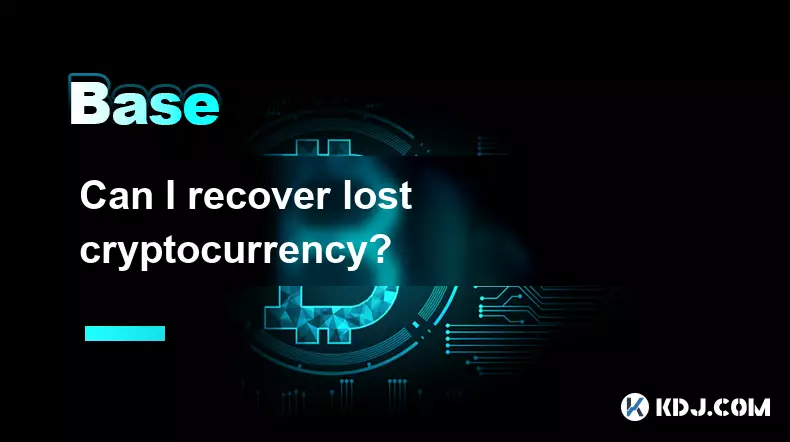
Can I recover lost cryptocurrency?
Sep 25,2025 at 08:18am
Understanding the Nature of Cryptocurrency Loss1. Cryptocurrency operates on decentralized networks, meaning there is no central authority to reverse ...

How do I choose a cryptocurrency investment strategy?
Sep 27,2025 at 03:55pm
Understanding Risk Tolerance in Crypto Investing1. Assessing personal risk tolerance is a foundational step when entering the cryptocurrency market. V...
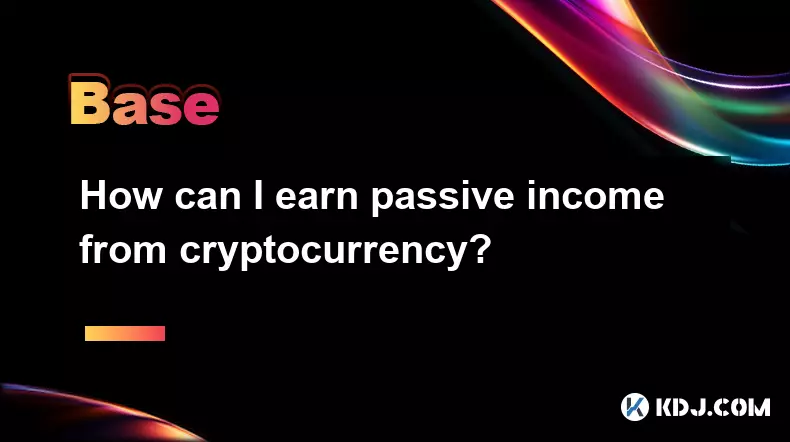
How can I earn passive income from cryptocurrency?
Sep 23,2025 at 10:18am
Staking Cryptocurrencies for Regular Returns1. Many blockchain networks operate on a proof-of-stake (PoS) consensus mechanism, allowing users to earn ...

How does cryptocurrency achieve decentralization?
Sep 30,2025 at 04:37am
Understanding the Foundation of Decentralization in Cryptocurrency1. Cryptocurrency achieves decentralization primarily through the use of blockchain ...

What are some common methods of cryptocurrency market manipulation?
Sep 27,2025 at 02:55am
Wash Trading and Its Impact on Market Perception1. Wash trading involves an individual or entity simultaneously buying and selling the same cryptocurr...

How do I read a cryptocurrency whitepaper?
Sep 27,2025 at 05:54am
Understanding the Structure of a Cryptocurrency Whitepaper1. Begin by identifying the executive summary, which outlines the project’s core vision and ...

Can I recover lost cryptocurrency?
Sep 25,2025 at 08:18am
Understanding the Nature of Cryptocurrency Loss1. Cryptocurrency operates on decentralized networks, meaning there is no central authority to reverse ...

How do I choose a cryptocurrency investment strategy?
Sep 27,2025 at 03:55pm
Understanding Risk Tolerance in Crypto Investing1. Assessing personal risk tolerance is a foundational step when entering the cryptocurrency market. V...

How can I earn passive income from cryptocurrency?
Sep 23,2025 at 10:18am
Staking Cryptocurrencies for Regular Returns1. Many blockchain networks operate on a proof-of-stake (PoS) consensus mechanism, allowing users to earn ...
See all articles

















